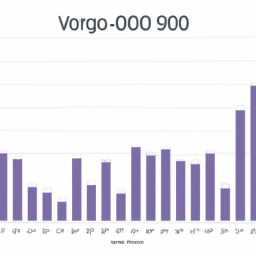The Vanguard S&P 500 ETF (VOO) is a popular investment option for those seeking low-cost exposure to the U.S. stock market. With over $200 billion in assets under management, VOO is one of the largest ETFs in the world. Both VOO and the Vanguard Total Stock Market ETF (VTI) offer broad market exposure, but there are some key differences to consider before investing.
Since my last article on VOO in July 2021, the ETF has lost 9% of its value even after dividend income. This decline is likely due to a variety of factors, including inflation concerns, supply chain disruptions, and the ongoing COVID-19 pandemic. However, it's important to remember that the stock market has historically recovered from downturns and provided strong long-term returns.
Designed to provide exposure to the Large Cap Blend segment of the U.S. equity market, VOO is a passively managed ETF that tracks the S&P 500 index. This means that the fund's holdings mirror those of the index, with no active management or stock picking involved. As of September 2021, the top ten holdings in VOO were Apple, Microsoft, Amazon, Facebook, Alphabet, Berkshire Hathaway, Tesla, Johnson & Johnson, JPMorgan Chase, and Visa.
While VOO has performed well over the long term, it's important to note that the ETF is subject to market fluctuations and volatility. For example, while VOO is up over the past month, the rally has come despite still-elevated real Treasury and corporate bond yields and a fall in free cash flow yields.
Investors looking to diversify their portfolios can consider adding ETFs that focus on the Dow Jones, S&P 500, and Nasdaq 100 to their holdings. These ETFs provide exposure to different segments of the U.S. stock market and can help mitigate risk.
The S&P 500 index is one of the primary U.S. stock market benchmarks and is a favored investment by both retail investors and financial advisors. While past performance is no guarantee of future results, the S&P 500 has historically provided strong long-term returns.
There are several ETFs that are designed to track the performance of the S&P 500 index, including VOO, the iShares Core S&P 500 ETF (IVV), and the SPDR S&P 500 ETF Trust (SPY). These ETFs have similar expense ratios and track the same index, but may differ slightly in terms of holdings and performance.
Investors considering VOO should be aware of the ETF's fees and expenses. VOO has an expense ratio of just 0.03%, making it one of the lowest-cost ETFs available. Additionally, VOO has a strong track record of tracking the S&P 500 index, with minimal tracking error.
In terms of valuation, VOO has a P/E ratio of 20.6, which is slightly higher than the 10-year median of 17.2. However, it's important to remember that P/E ratios can vary widely depending on market conditions and other factors.
Overall, VOO is a strong investment option for those seeking low-cost exposure to the U.S. stock market. While the market may be shaky in the short term, history has shown that the stock market is a safe and reliable long-term investment option.
Ticker: VOO, VTI, AAPL, MSFT, AMZN, FB, GOOGL, BRK.B, TSLA, JNJ, JPM, V, IVV, SPY.
